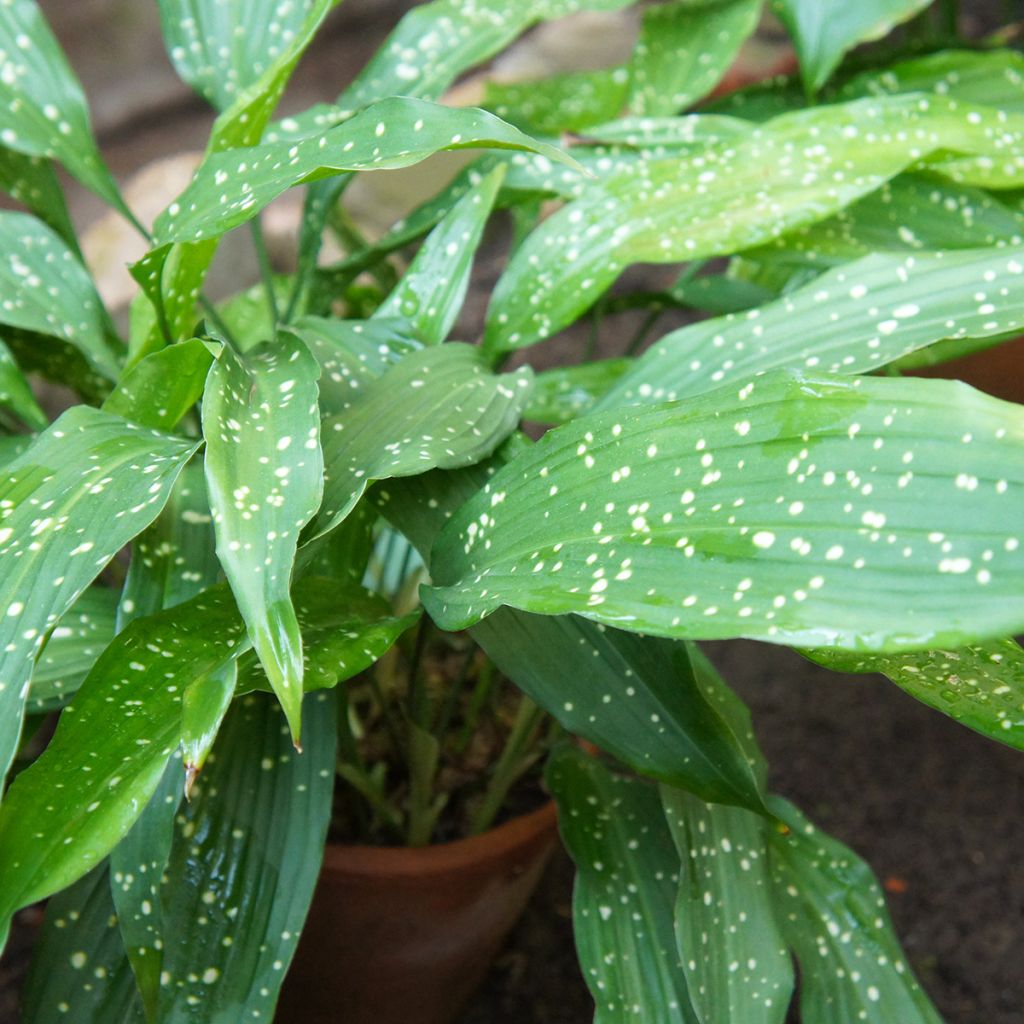

Aspidistra Milky Way - Cast-Iron Plant
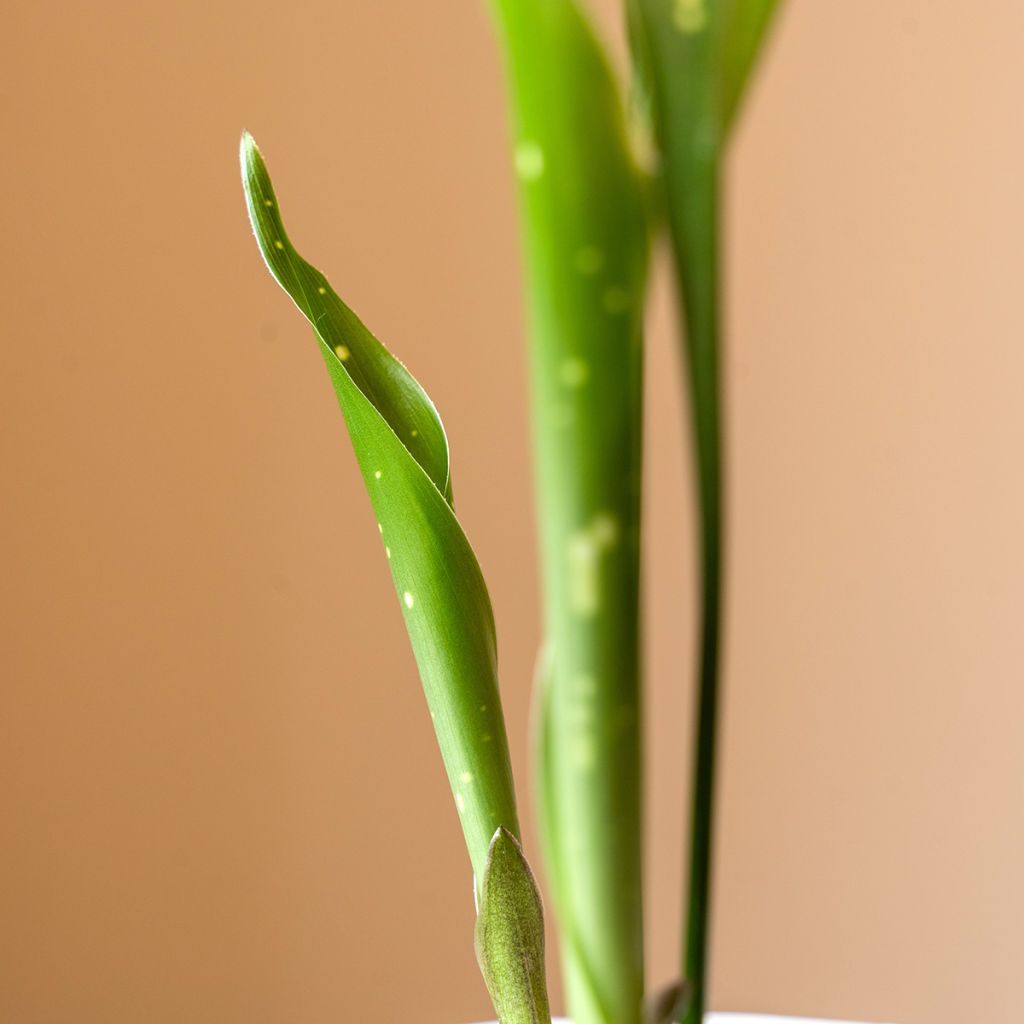

Aspidistra Milky Way - Cast-Iron Plant
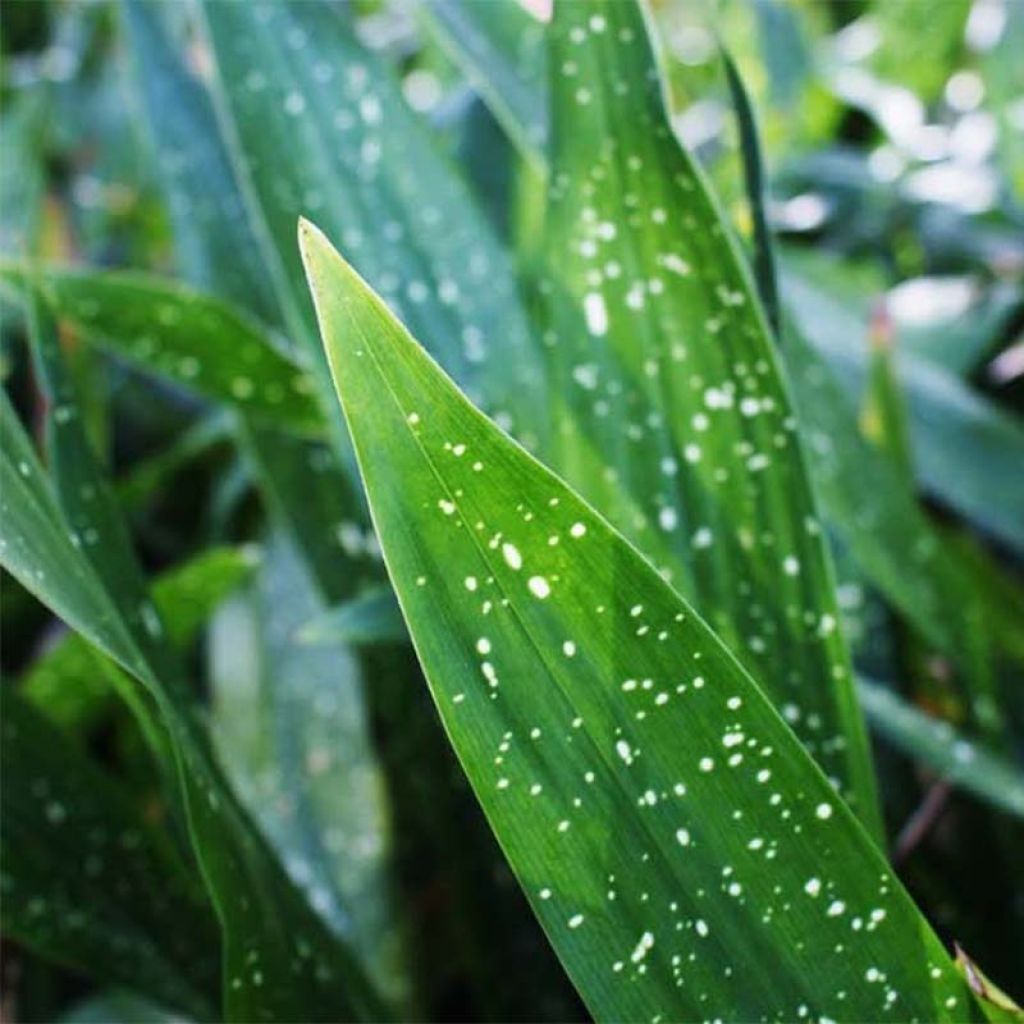

Aspidistra Milky Way - Cast-Iron Plant
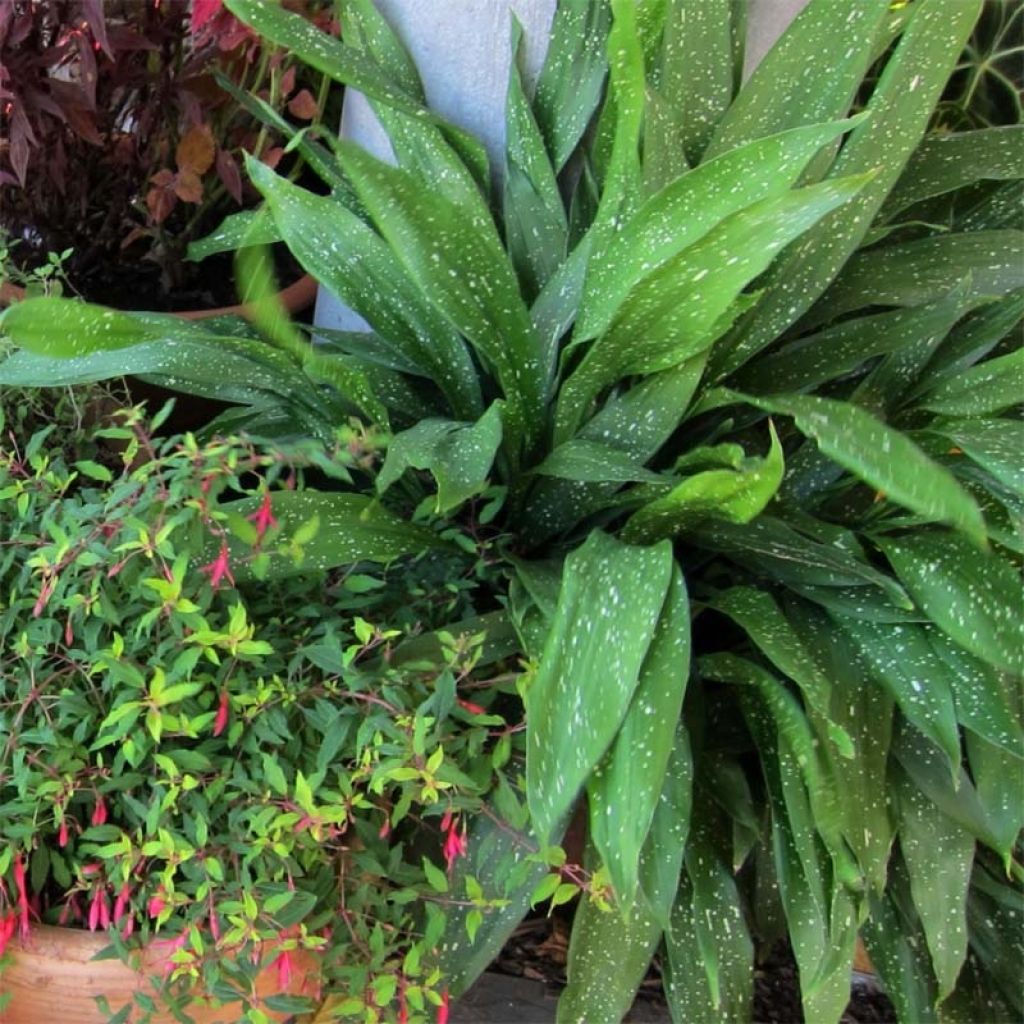

Aspidistra Milky Way - Cast-Iron Plant
Aspidistra Milky Way - Cast-Iron Plant
Aspidistra x elatior Milky way
Cast-Iron Plant, Bar Room Plant
This plant carries a 12 months recovery warranty
More information
We guarantee the quality of our plants for a full growing cycle, and will replace at our expense any plant that fails to recover under normal climatic and planting conditions.
Does this plant fit my garden?
Set up your Plantfit profile →
Description
Aspidistra eliator 'Milky Way' is a charming selection of a more compact but tall Aspidistra, which will seduce with its finer foliage, completely speckled with small white spots like the Milky Way. An excellent indoor plant, it is also a very good garden plant for shade, even in dry conditions. Over time, this rhizomatous perennial forms a remarkable evergreen ground cover that dresses the base of deciduous trees, which provide it with a well-drained leaf litter that it loves. This variety regularly flowers, close to the ground, with fleshy flowers that start out brown-violet at the base of the foliage. Place this little wonder at the base of trees, along paths, in pots on the terrace or balcony, in the conservatory, or even in your living room.
Aspidistra eliator Milky Way is a plant in the Convallariaceae family, along with lily of the valley and Liriope muscari, which are known for their incredible robustness. Its ancestor is native to Taiwan and Japan, specifically the undergrowth of the Osumi Peninsula, from where it was widely introduced to China. It arrived in Great Britain in the 19th century, conquering Victorian interiors, and gradually French and European living rooms where it quickly proved to be remarkably resistant and adaptable and, in fact, almost completely undemanding. It is capable of regrowing from the stump after experiencing temperatures as low as -10 °C (14 °F) and tolerates dry shade very well as long as it receives a bit of light.
This is a slow-growing rhizomatous herbaceous perennial, with almost non-existent stems. It forms a dense clump of leaves about 35-45 cm (14-18 in) in all directions, more or less depending on the soil's fertility, slowly expanding to form large colonies over time. Its growth is quite slow and it never becomes invasive. Its leaves persist in winter. They are lanceolate and leathery, ending in a point and measuring about 30 to 35 cm (12 to 14 in) in length and 5 to 6 cm (2 in) in width. They are glossy, entirely punctuated with white, and light green when they emerge, becoming very dark green in summer. Flowering takes place in early summer in June, on mature plants, at the base of the clumps of leaves. The flowers emerge from ovoid violet buds. They open into fleshy cups with a waxy appearance, composed of 8 tapering lobes at their tips. Their colour is cream-white speckled with brown-violet on the outside, with a very dark brown-violet colour on the inside. The flowering is followed by the formation of small spherical and dark berries.
Easier to find at florists than in nursery aisles, Aspidistra elatior is actually a robust perennial plant whose qualities are being rediscovered, but this time in the garden. Much more decorative than the usual species, the 'Milky Way' cultivar deserves much better than dark corridors and dusty corners. It is an elegant, gently original, versatile and low-maintenance plant. Its great resistance to these difficult conditions allows it to be used in many situations: in light shade, at the base of trees, as a border to highlight the design of a path, in rock gardens alongside heathers, for example, or in Japanese-style gardens. It will accompany hostas, ferns, geranium phaeum, Epimedium, or ground ivy (Glechoma hederacea), for example. It is a plant that grows very well in pots, on a partially shaded window or balcony. It is so accommodating that it will forgive neglectful watering and thrive in gardens without gardeners, or in weekend gardens.
Report an error about the product description
Aspidistra Milky Way - Cast-Iron Plant in pictures
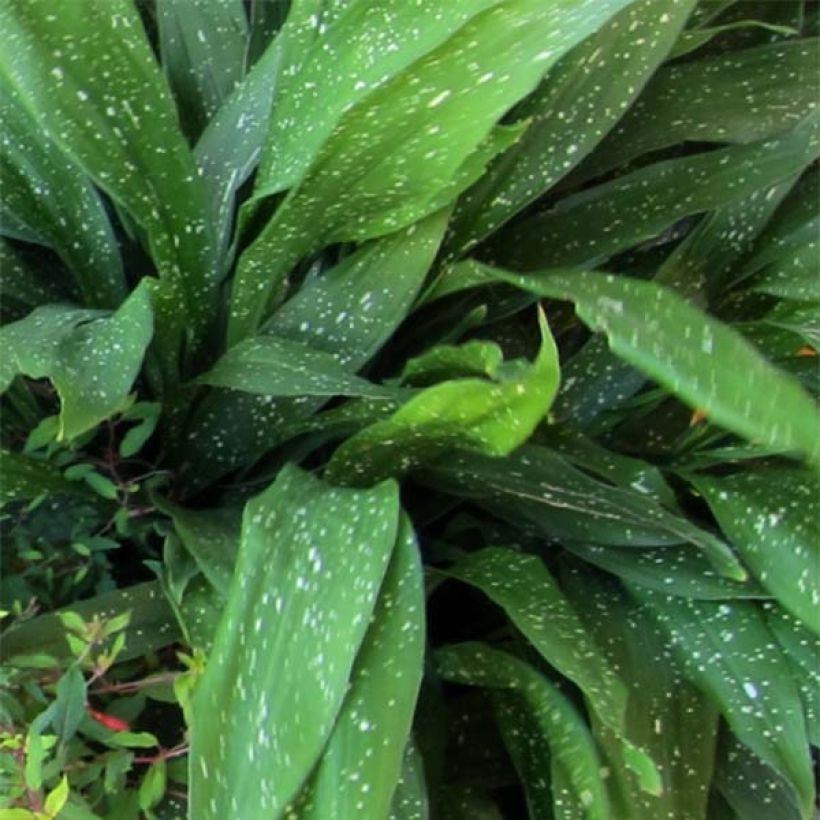

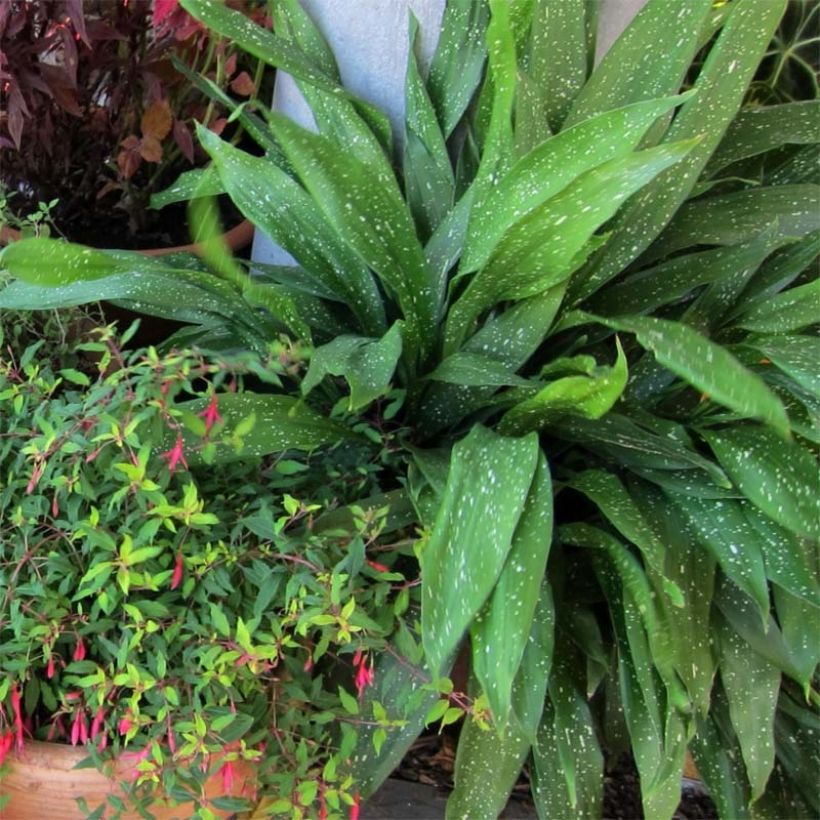

Flowering
Foliage
Plant habit
Botanical data
Aspidistra
x elatior
Milky way
Convallariaceae
Cast-Iron Plant, Bar Room Plant
East Asia
Planting and care
Plant Aspidistra eliator Milky Way in spring or autumn, in a well-drained, light soil that is not too chalky (ideally slightly acidic like acid compost), in shade or semi-shade, without direct sunlight. Its roots suffer from stagnant moisture in winter, so it will be necessary to ensure good drainage in heavy and clayey soil. When planted under large trees, it benefits from natural drainage due to their roots absorbing water. This perennial also appreciates the layer of compost that naturally forms at the base of deciduous trees if leaves are allowed to decompose naturally. In early spring, remove damaged leaves before annual regrowth. This plant does not require any particular maintenance and can go without watering once established. The foliage disappears below -5 °C (23 °F), but the plant regrows from the stump in spring after short freezes at around -8 to -10 °C (17.6 to 14 °F).
Its enemies are gastropods (slugs, snails) in spring: make sure to protect it, especially in the first few years. Excess moisture can lead to the development of fungi that cause brown spots on the leaves. To help it establish itself, carefully weed around the young plants in the first few years.
Pot cultivation: in good horticultural compost, with a drainage layer at the bottom of the pot to help water drain. This Aspidistra can also be grown indoors, in a bright room but without direct sunlight that can scorch the foliage. Water regularly but not excessively, allowing the surface of the compost to dry between waterings. Occasionally apply a universal fertiliser, every 15 days during the growth period, but not in winter. The roots should not sit in the water in the saucer placed under the pot.
The leaves collect dust and can be washed or wiped but only with clear water: bear in mind that dust does not harm plants; it only affects their aesthetic appearance.
Repotting every 2-3 years in spring is sufficient. Take the opportunity to divide your Aspidistra, taking pieces of rootstock with at least 2 leaves. The young plants should only receive fertiliser after a few months of growth, in the following spring when vegetation resumes.
Planting period
Intended location
Care
This item has not been reviewed yet - be the first to leave a review about it.
Haven't found what you were looking for?
Hardiness is the lowest winter temperature a plant can endure without suffering serious damage or even dying. However, hardiness is affected by location (a sheltered area, such as a patio), protection (winter cover) and soil type (hardiness is improved by well-drained soil).

Photo Sharing Terms & Conditions
In order to encourage gardeners to interact and share their experiences, Promesse de fleurs offers various media enabling content to be uploaded onto its Site - in particular via the ‘Photo sharing’ module.
The User agrees to refrain from:
- Posting any content that is illegal, prejudicial, insulting, racist, inciteful to hatred, revisionist, contrary to public decency, that infringes on privacy or on the privacy rights of third parties, in particular the publicity rights of persons and goods, intellectual property rights, or the right to privacy.
- Submitting content on behalf of a third party;
- Impersonate the identity of a third party and/or publish any personal information about a third party;
In general, the User undertakes to refrain from any unethical behaviour.
All Content (in particular text, comments, files, images, photos, videos, creative works, etc.), which may be subject to property or intellectual property rights, image or other private rights, shall remain the property of the User, subject to the limited rights granted by the terms of the licence granted by Promesse de fleurs as stated below. Users are at liberty to publish or not to publish such Content on the Site, notably via the ‘Photo Sharing’ facility, and accept that this Content shall be made public and freely accessible, notably on the Internet.
Users further acknowledge, undertake to have ,and guarantee that they hold all necessary rights and permissions to publish such material on the Site, in particular with regard to the legislation in force pertaining to any privacy, property, intellectual property, image, or contractual rights, or rights of any other nature. By publishing such Content on the Site, Users acknowledge accepting full liability as publishers of the Content within the meaning of the law, and grant Promesse de fleurs, free of charge, an inclusive, worldwide licence for the said Content for the entire duration of its publication, including all reproduction, representation, up/downloading, displaying, performing, transmission, and storage rights.
Users also grant permission for their name to be linked to the Content and accept that this link may not always be made available.
By engaging in posting material, Users consent to their Content becoming automatically accessible on the Internet, in particular on other sites and/or blogs and/or web pages of the Promesse de fleurs site, including in particular social pages and the Promesse de fleurs catalogue.
Users may secure the removal of entrusted content free of charge by issuing a simple request via our contact form.
The flowering period indicated on our website applies to countries and regions located in USDA zone 8 (France, the United Kingdom, Ireland, the Netherlands, etc.)
It will vary according to where you live:
- In zones 9 to 10 (Italy, Spain, Greece, etc.), flowering will occur about 2 to 4 weeks earlier.
- In zones 6 to 7 (Germany, Poland, Slovenia, and lower mountainous regions), flowering will be delayed by 2 to 3 weeks.
- In zone 5 (Central Europe, Scandinavia), blooming will be delayed by 3 to 5 weeks.
In temperate climates, pruning of spring-flowering shrubs (forsythia, spireas, etc.) should be done just after flowering.
Pruning of summer-flowering shrubs (Indian Lilac, Perovskia, etc.) can be done in winter or spring.
In cold regions as well as with frost-sensitive plants, avoid pruning too early when severe frosts may still occur.
The planting period indicated on our website applies to countries and regions located in USDA zone 8 (France, United Kingdom, Ireland, Netherlands).
It will vary according to where you live:
- In Mediterranean zones (Marseille, Madrid, Milan, etc.), autumn and winter are the best planting periods.
- In continental zones (Strasbourg, Munich, Vienna, etc.), delay planting by 2 to 3 weeks in spring and bring it forward by 2 to 4 weeks in autumn.
- In mountainous regions (the Alps, Pyrenees, Carpathians, etc.), it is best to plant in late spring (May-June) or late summer (August-September).
The harvesting period indicated on our website applies to countries and regions in USDA zone 8 (France, England, Ireland, the Netherlands).
In colder areas (Scandinavia, Poland, Austria...) fruit and vegetable harvests are likely to be delayed by 3-4 weeks.
In warmer areas (Italy, Spain, Greece, etc.), harvesting will probably take place earlier, depending on weather conditions.
The sowing periods indicated on our website apply to countries and regions within USDA Zone 8 (France, UK, Ireland, Netherlands).
In colder areas (Scandinavia, Poland, Austria...), delay any outdoor sowing by 3-4 weeks, or sow under glass.
In warmer climes (Italy, Spain, Greece, etc.), bring outdoor sowing forward by a few weeks.



































